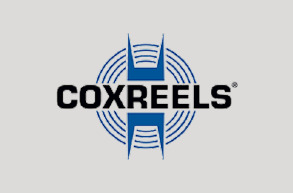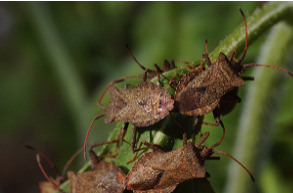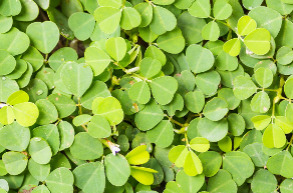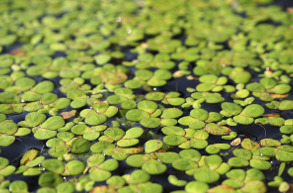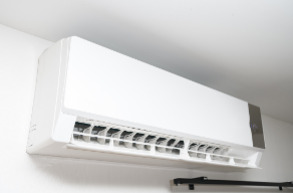Broomsedge Control
Most Effective Products
Broomsedge Control: How To Get Rid of Broomsedge
Broomsedge (Andropogon virginicus) is a perennial native weed. Despite its name, Broomsedge is not actually a sedge, rather, it’s a grass. When mature, it is brown and dry compared to bluish-green when young. Its name comes from the fact that in the past when Broomsedge reached it’s reproductive stage, it produced a golden stem that was often cut, bound and used as a broom.
Broomsedge thrives in grazed areas that have not been given enough care and maintenance. This allows Broomsedge to quickly take over because grazing animals tend to avoid the grassy weed. On pastures, Broomsedge is known by the nickname "poverty grass" because it's of low-quality and lack of nutritional value. Livestock hate to eat it. Where ever Broomsedge has been established, grazing animals turn their attention to the more desired vegetation in the area and after depleting those sources, Broomsedge is left to thrive and survive in the environment.
Broomsedge that is growing on lawns are much easier to control than in pastures and the best way to do so on lawns is through cultural methods which allow the turfgrass to become thick and nutrient-rich, thus aiding in Broomsedge control by choking it out of the landscape.
Our DIY Broomsedge treatment guide will show you exactly how to best get rid broomsedge from your property. Follow the step-by-step instructions below using the recommended herbicides to the right and you're guaranteed a successful removal of Broomsedge.
Identification
Broomsedge is a perennial grass that has a clumping habit and grows in pastures, grazelands, and areas that are poorly maintained. The grassy weed often flies under the radar until it reaches maturity, going from green to reddish-brown bunches of broom-like leaves from which it receives its common name. Broomsedge is most easily identified via its unique flattened leaves, hairy spikelets and stems that turn reddish-brown as they age.
Use the description and the image above to confirm whether you are dealing with broomsedge. If you’re unsure or can’t quite determine exactly which kind of weed you are encountering in your yard, contact us and we will help ID the weed for you. We recommend taking a high-resolution photo of the unwanted weed with your phone and shooting it over to our email address. We will respond back to you quickly with not only the correct ID of the plant, but we will also give you expert recommendations of products and techniques to apply to remove that weed from your lawn.
Inspection

Where to Inspect
Broomsedge typically grows on loose, sandy, moist soils in ranges and pastures as well as uplands and woodlands. Habitats include prairie lands, savannahs, rocky glades, sandy or gravelly areas along railroads, abandoned sandy fields, open areas of parks, mined land, and barren waste areas. Broomsedge tends to thrive in open areas with infertile soil that has been subjected to a history of disturbance or stress, whether from occasional wildfires, grazing, or other causes.
Broomsedge on a pasture or landscape is an indicator that the land has been overgrazed or neglected or both.
What To Look For
Broomsedge sticks out like a sore thumb on ranges as it looks like grass but is distinguished by its ugly orangish-brown color.
Once you have determined how severe of a problem you have (a minor issue or majorly taking over the entire landscape) you will then know where to focus your chemical herbicide applications.
Treatment
Please be sure that when handling any type of herbicide, you are properly protecting your skin and eyes with safety equipment. Wear protective eyewear, gloves and long-sleeved clothing.
Broomsedge is best removed manually but if you have a large infestation of Broomsedge you are dealing with, you may not have the time or the energy to be pulling or cutting down all the Broomsedge. This is when chemical control would be best. Unfortunately, there are no selective herbicides that can successfully treat Broomsedge so you will have to use non-selective Glyphosate and be careful when spot treating so you don't get the chemical on your desired grasses.
Step 1 - Spot Treat With Eraser

Eraser contains 41% Glyphosate as an active ingredient and works systemically through the foliage down to the root killing the entire plant within days. Keep in mind that Eraser is a non-selective herbicide and thus is a kill-all treatment. While broomsedge is not specifically worded on the label it does state various perennial weeds.
Use Eraser as a spot treatment and be careful not to get the chemical on any of your desired vegetation. An indicator dye like Vision Pro Max mixed with the spray application will aid you in keeping track of where you spray so you don't accidentally spray on your desired grass.
Measure the square footage of the treatment area to determine how much Eraser you need. For spot treatments, 2.5 oz. of Eraser in a gallon of water can treat 300 sq. ft. Mix the appropriate amount of Eraser into your sprayer with Vision Pro Max indicator dye (at a rate of 6 to 10 fl. oz. per 100 gallons of spray solution) to help you keep track of where you spray. Agitate the sprayer and you are ready to spray.
With a fan tip nozzle, spot spray the Broomsedge to ensure it is evenly coated. You may need to do repeat applications after 7 to 10 days if the weed is particularly persistent and problematic.
Eraser is a non-selective herbicide and will kill whatever you spray so you must be very careful when applying Eraser if Broomsedge is near your desired grass. In some cases, it may be better to paint the product on the Signalgrass with a brush or block the desired grass with a piece of cardboard.
Prevention

A lush and healthy lawn is less prone to invasion by the Broomsedge plant. Broomsedge grass grows best in poor soil and disperses an allelopathic chemical that keeps wanted plants from growing. Properly fertilize your landscape at the best time recommended for your particular grass. Mow your grass regularly and at the right height. Broomsedge thrives on sunlight so keeping a lush lawn shades out weed seeds which hinders the growth of the weed. Reseed thin patches of turf in the lawn as an effective means of Broomsedge control.
Since effective Broomsedge control includes proper fertilization, take a soil test to determine which nutrients are necessary for thick, healthy turfgrass on your lawn. Broomsedge does not grow well in landscapes that have high nitrogen in the soil.
Key Takeaways
- Broomsedge is a fast-growing perennial grass that is known to spread over agricultural sites, especially in the springtime.
- We recommend using Eraser (non-selective Glyphosate) to eliminate Broomsedge from your landscape.
- The best way to prevent Broomsedge on lawns is through cultural methods that allow the turfgrass to become thick and nutrient-rich, thus aiding in Broomsedge control by choking it out of the landscape.




















































